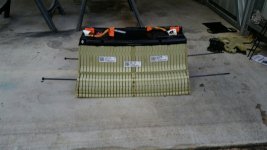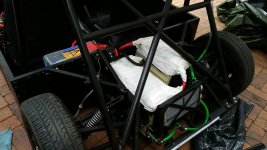I think I am screwed. This guy has sold me this pack as a 150v pack. It certainly is at 150v at the moment. But it is supposed to be at 210V (I think). If that is the case it will trip my controller's over voltage protection (aything over about 175v).
So now I have a big decision.
I could just run the larger portion of the pack (4KwH) but this would only run at 122.4v (not ideal)
or I could just stop charging when the pack gets to about 170v
and of course this all assumes I can find a suitable charger. Grrrrrr
I had a response from EV Power - They do not support this chemistry.
Still waiting on a response from Zeva and EV Works.
The task is made more difficult by the fact most advice on the forums is refering to chargers plugged into 110v AC wall sockets while we run 240v ac here.
So now I have a big decision.
I could just run the larger portion of the pack (4KwH) but this would only run at 122.4v (not ideal)
or I could just stop charging when the pack gets to about 170v
and of course this all assumes I can find a suitable charger. Grrrrrr
I had a response from EV Power - They do not support this chemistry.
Still waiting on a response from Zeva and EV Works.
The task is made more difficult by the fact most advice on the forums is refering to chargers plugged into 110v AC wall sockets while we run 240v ac here.





